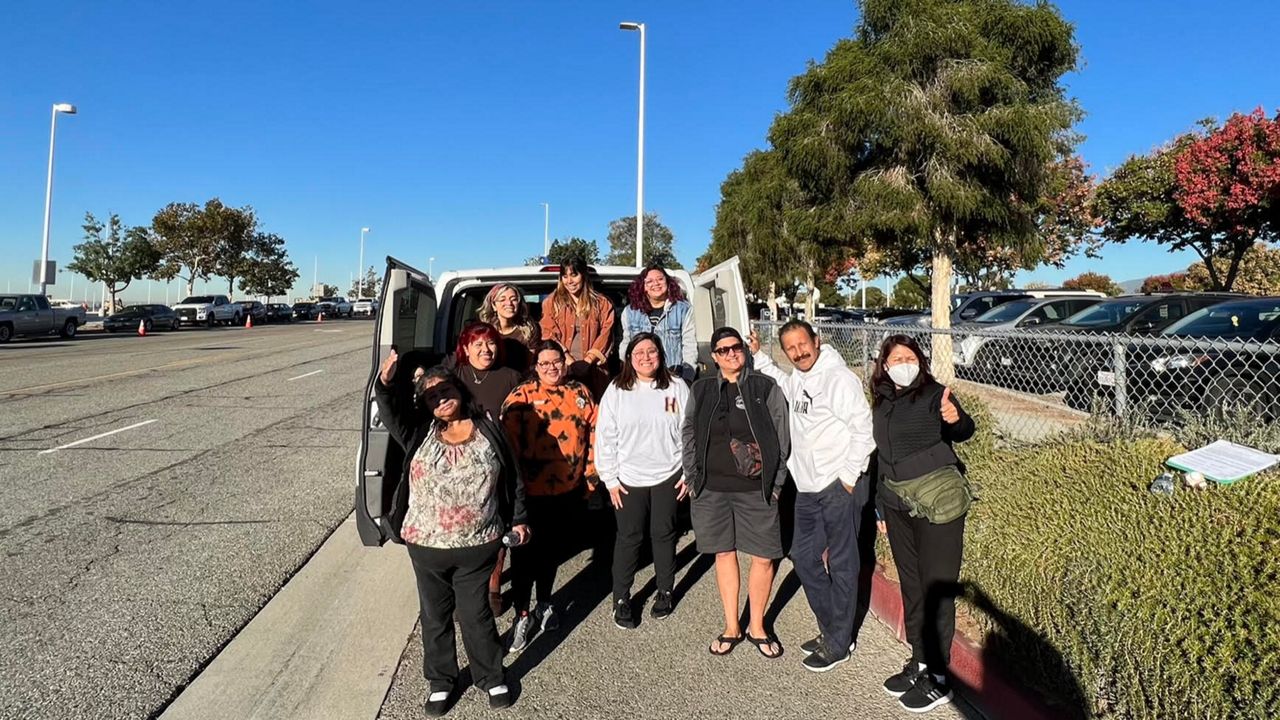LOS ANGELES — As California prepares to hold a public hearing on sales targets for new medium- and heavy-duty electric trucks Thursday, a caravan of clean air advocates is headed to Sacramento to call for a more aggressive timeline.
Members of over 70 organizations representing labor, environmental justice, health and business are asking the state’s Air Resources Board to set a goal of 100% electric truck sales by 2036 — four years earlier than the Advanced Clean Fleet regulation the agency proposed over the summer.
Uniting for a campaign called Electric Trucks Now, the groups say that moving up the sales target by four years would provide $10 billion more net benefits to state residents.
“Our communities have been targeted by the goods movement industry for warehouses, rail yards and freeway expansions over the last couple decades, which has resulted in thousands upon thousands of diesel trucks that come into our communities,” said Andrea Vidaurre, senior policy analyst for the People’s Collective for Environmental Justice, which represents immigrant and Black communities in the Inland Empire.
Vidaurre was traveling in one of a handful of vehicles that began their journey from Oxnard on Tuesday, stopping in Fresno and the Port of Oakland to meet with community members who have been disproportionately affected by diesel trucks’ pollution. On Thursday, they will rally on the steps of the California Environmental Protection Agency building in Sacramento, where the Air Resources Board is scheduled to hold its public hearing.
“Diesel pollution is not just an issue for the Inland Empire in Los Angeles,” Vidaurre said. “It’s a pervasive issue across the state, and CARB has a responsibility to all these communities to do everything in their power to make a stronger rule.”
According to the American Lung Association’s 2022 State of the Air Report, 38 million Californians live in communities with unhealthy air.
“That’s 98% of all Californians facing unhealthy levels of ozone and/or particle pollution,” said Will Barrett, national senior director for clean air advocacy at the American Lung Assn. in California. The group is one of 20 health organizations calling on CARB to push its timeline forward.
Six of the 10 most ozone-polluted cities in the nation are in California, according to the ALA report, and 80% of California’s ozone challenges are due to the transportation sector, he said. While medium- and heavy-duty trucks account for less than 5% of vehicles on California roads, they generate more than half of all smog- and particle-forming transportation pollution.
“There are thousands of additional lives saved waiting to be had if CARB strengthens the rule,” Barrett said, adding that diesel particle pollution causes lung cancer and a wide range of other health effects, including asthma attacks, heart attacks, strokes and premature deaths.
The Advanced Clean Fleet rule requires medium- and heavy-duty truck operators to purchase an increasing percentage of zero-emissions trucks in an effort to reduce harmful emissions. Two years ago, the California Air Resources Board adopted a companion regulation called the Advanced Clean Trucks rule that required manufacturers to sell zero-emissions trucks. Together, the two rules are intended to help the state meet its goal of achieving a zero-emissions truck and bus fleet by 2045.
The Air Resources Board will decide on the final timeline for the Advanced Clean Fleet rule in early 2023.



